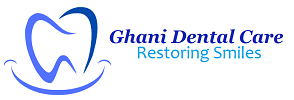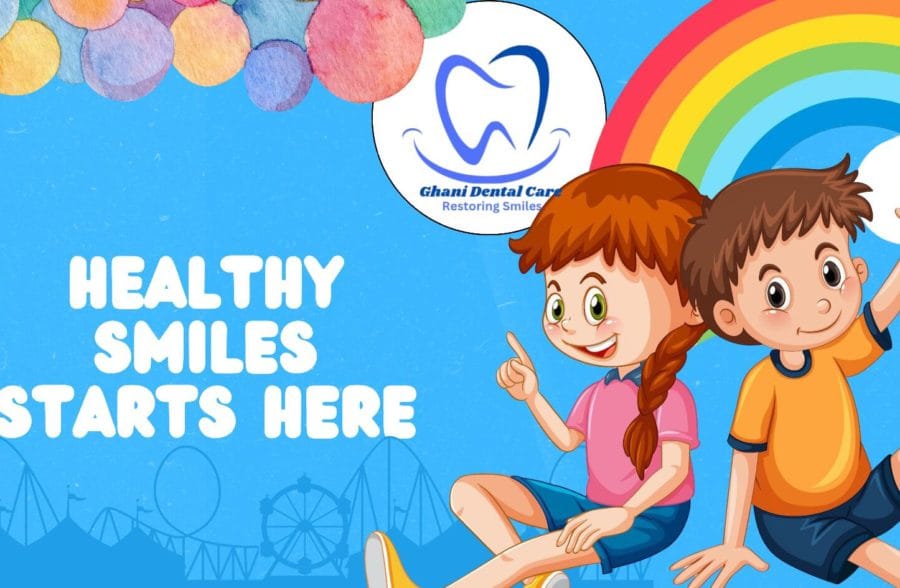Importance of a Timely Orthodontic Checkup for Children
- By Dr. M. Usman Ghani
- Consultant Orthodontist & Specialist Dental Surgeon
- Assistant Professor of Orthodontics,
- Lahore Medical and Dental College, Lahore
- Ghani Dental Care, Model Town, Lahore
Why Early Orthodontic Checkups Matter
Over the years of practicing orthodontics, I’ve noticed that many parents are unsure when their child should first visit an orthodontist.
Most people think that braces treatment should only begin once all permanent teeth have erupted or when the child is old enough to understand the treatment. While this can sometimes be fine, delaying the first checkup may lead to long-term dental problems that could have been easily prevented at an early stage.
1. The Hidden Importance of Baby Molars
Baby molars (the back milk teeth) are more than just chewing teeth — they act as space holders for upcoming permanent teeth, usually erupting around 11-12 years of age.
If a baby molar gets decayed or lost early, the neighboring teeth may drift into that space. This can cause crowding or crooked permanent teeth later on.
Early solution:
If treated in time, the tooth can be restored or replaced with a simple space maintainer. This small step often prevents the need for braces later and saves both time and money.
2. Front Teeth Coming Behind Lower Teeth (Anterior Crossbite)
Around age 7, the upper front teeth usually appear. Sometimes, these teeth erupt behind the lower teeth, causing both cosmetic and functional problems.
This may happen due to a retained baby tooth blocking the path of the new tooth.
If ignored, it can lead to:
- Damage to the lower front teeth
- Shifting of the lower jaw
- Development of a facial imbalance
Early solution:
If parents visit a dentist early, removing the retained baby tooth often allows the upper tooth to move into its correct place naturally. If it locks into the wrong position, a simple removable or fixed appliance can correct it easily — much cheaper and simpler than full braces later.
3. Checking the Position of Corner Teeth (Canines)
Between 8-9 years of age, dentists or orthodontists should feel for the developing corner teeth (canines) in the upper jaw. If these are not palpable, they might be moving toward the roof of the mouth, leading to complex alignment problems later.
Early solution:
Removing certain baby teeth or creating space can help the permanent canine erupt correctly — avoiding future complications and costly treatments.
4. Reverse Bite and Jaw Growth Problems
Some children have a reverse bite, where their upper teeth are behind the lower ones. This often occurs due to slow or deficient growth of the upper jaw. If left untreated during childhood, this can only be corrected later with jaw surgery – a much more complex and expensive option.
Early solution:
When treated early, simple appliances can guide jaw growth and prevent future surgery.
5. Extra (Supernumerary) Teeth
Occasionally, children develop extra teeth that block the eruption of normal teeth or cause spacing problems.
Early solution:
A timely X-ray and dental visit can detect and remove these extra teeth early, ensuring that permanent teeth erupt in their correct position.
6. Finger or Pacifier Habits
Prolonged thumb or finger sucking, or even regular pacifier use beyond early childhood, can cause gaps between the front teeth and affect the bite.
Early solution:
If the habit stops before permanent teeth erupt, the issue often corrects itself. If not, an orthodontist can help stop the habit and guide teeth back to their proper position using gentle appliances.
7. Prominent Front Teeth and Risk of Injury
Children with forwardly placed upper front teeth (commonly called “buck teeth”) have a higher risk of trauma or breakage.
Early solution:
Early orthodontic correction not only improves appearance but also protects the front teeth from future injury.
Regular Dental Visits Are the Key
- Children should begin regular dental visits as soon as their baby teeth erupt.
- If any baby tooth is lost early, an orthodontic consultation is highly recommended.
- Every child should have their first orthodontic assessment between ages 6 and 7.
This early checkup helps detect potential problems before they become serious, saving families from costly, lengthy, and complex treatments later in life.
Final Thoughts
Early orthodontic assessment is not about starting braces early — it’s about guiding your child’s dental growth and preventing future problems.
A simple visit at the right time can make the difference between a short, easy correction and a long, expensive treatment later.
📅 Book an Appointment Online
Want expert orthodontic guidance for your child?
Visit Ghani Dental Care, Model Town Lahore
or call (0333-4984-980) to schedule your child’s orthodontic checkup with
Dr. M. Usman Ghani.


